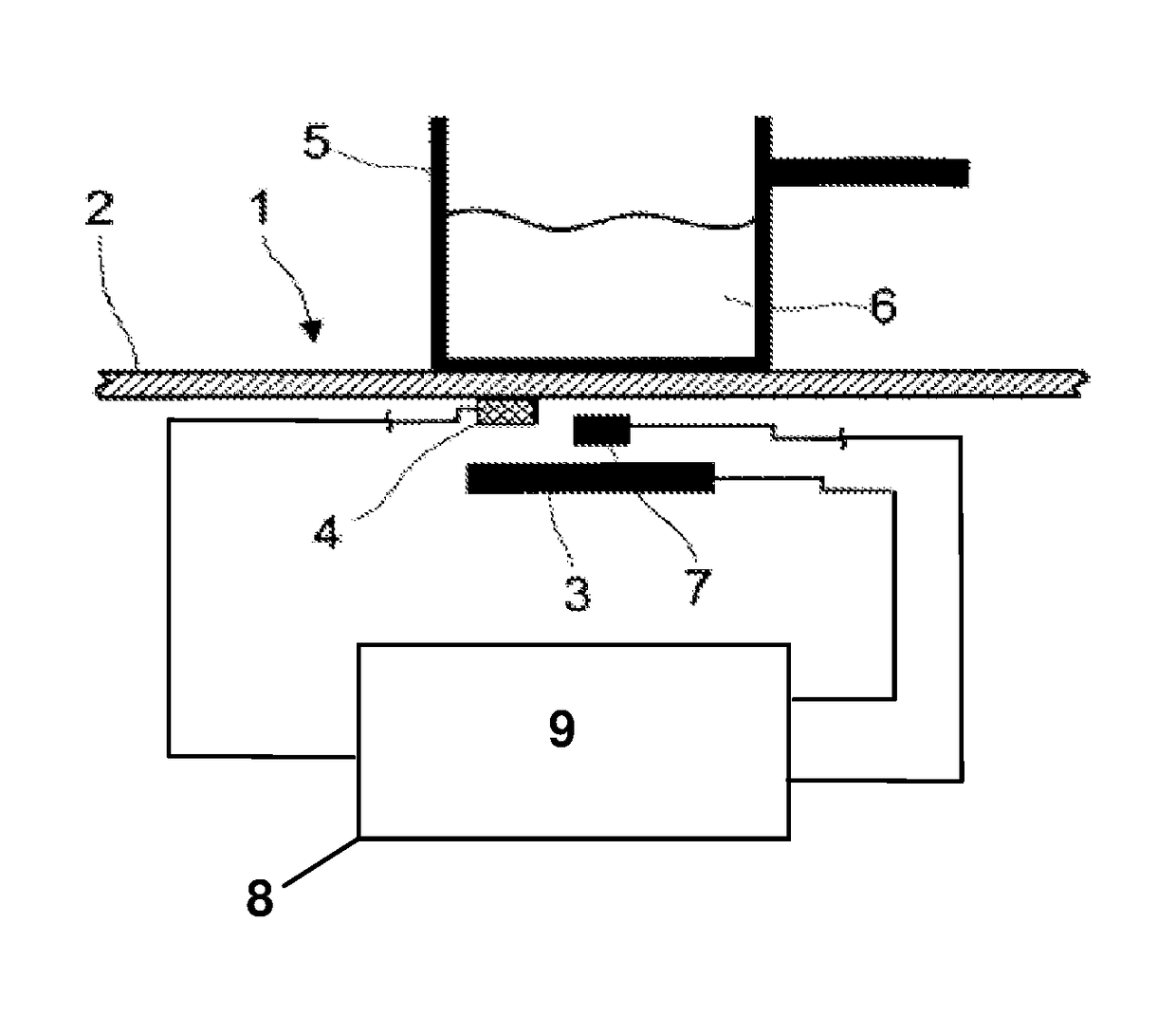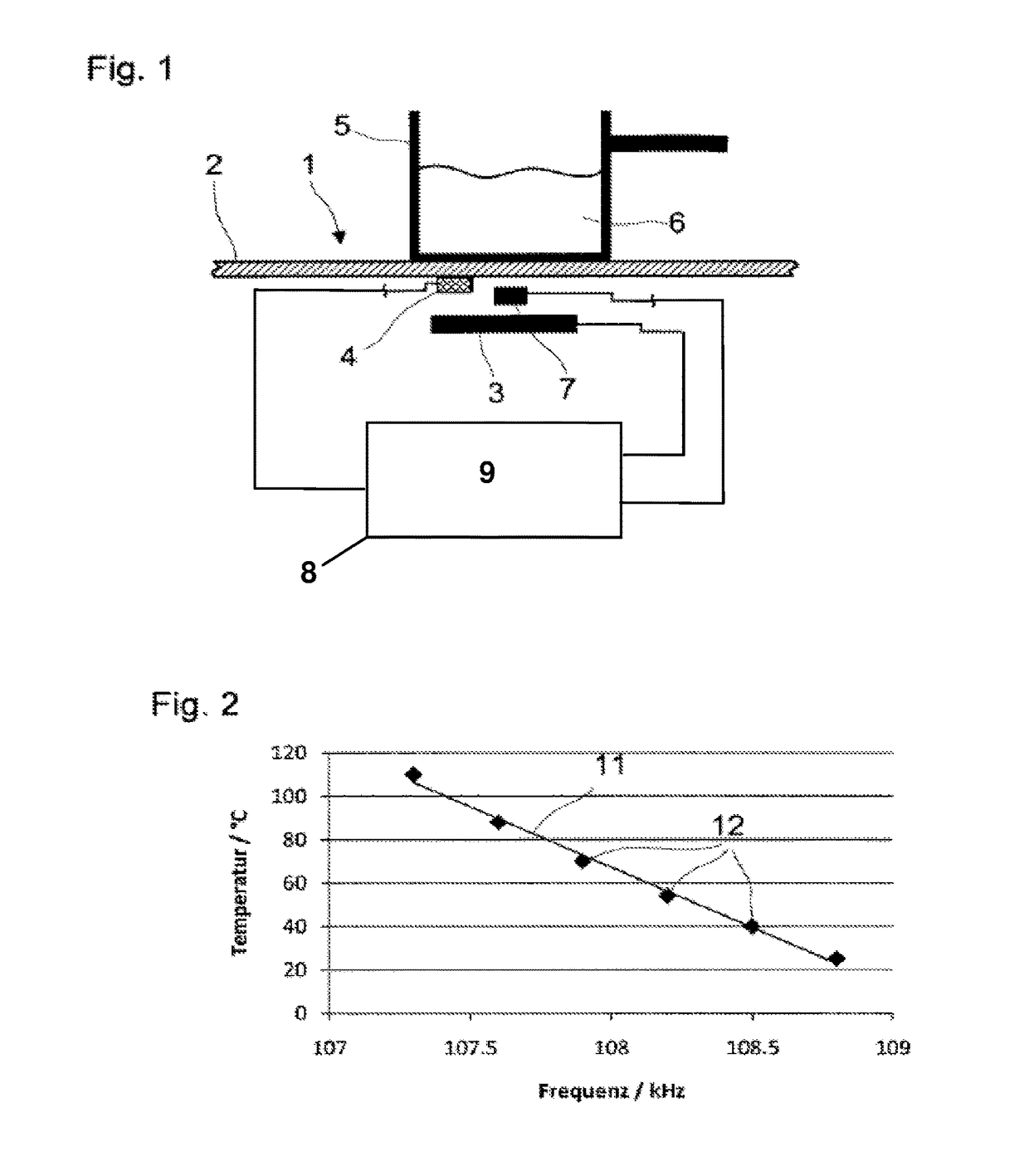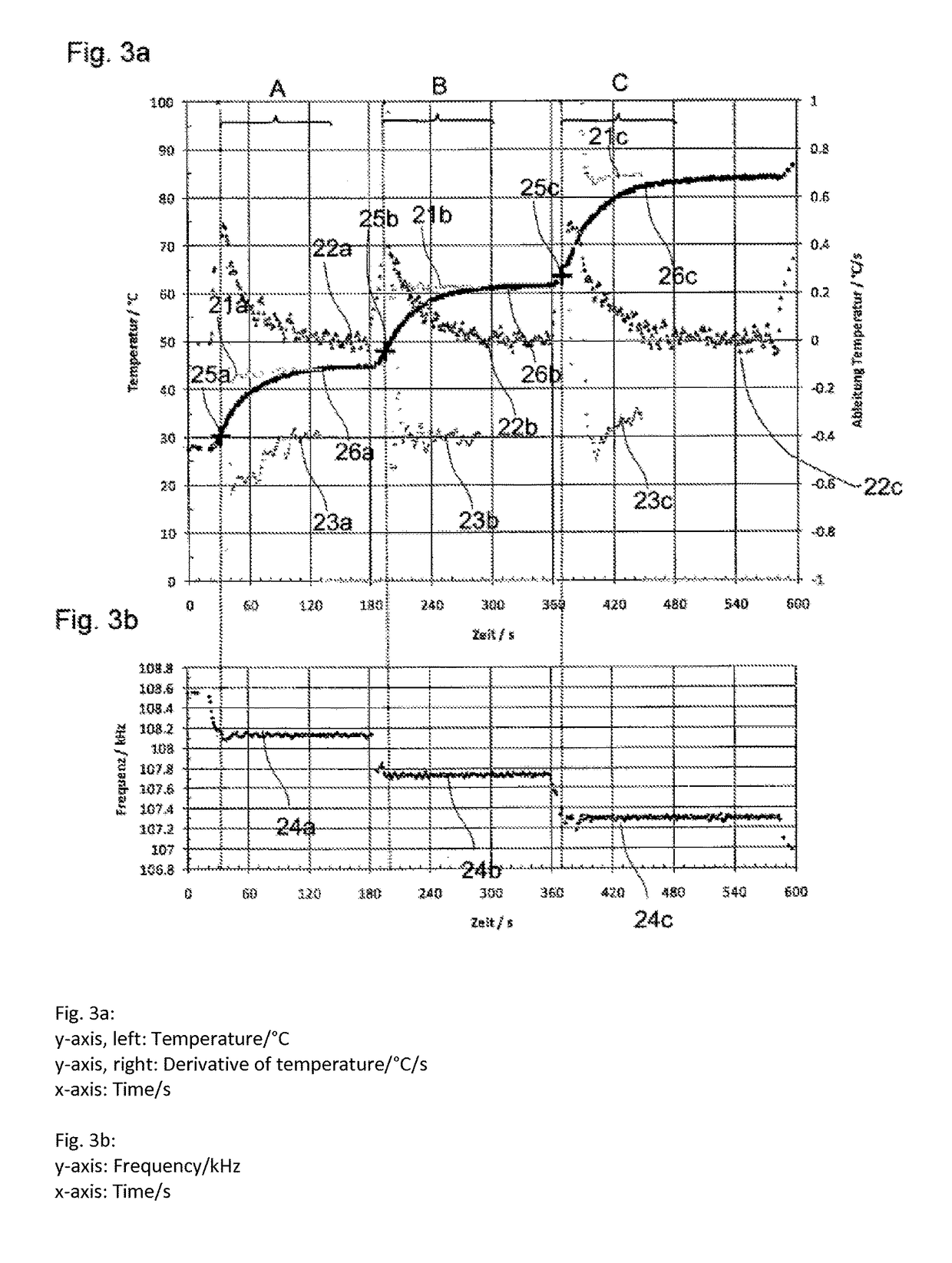Induction cooking device for temperature-controlled cooking
a technology of induction cooking and cooking support, which is applied in the direction of temperature measurement in household appliances, instruments, heat measurement, etc., can solve the problems of affecting the heating effect of the underside affecting the heating effect of the cooking support, and unable to measure the temperature of the bottom of the cooking pan in real tim
- Summary
- Abstract
- Description
- Claims
- Application Information
AI Technical Summary
Benefits of technology
Problems solved by technology
Method used
Image
Examples
Embodiment Construction
[0090]In the following, the subject of the invention is explained in more detail based on the figures. Here, schematically:
[0091]FIG. 1 shows a representation of the cooking zone of an induction cooking device;
[0092]FIG. 2 shows the graphic representation of the linear characteristic between the temperature of the article and the resonant frequency of an induction measuring resonant circuit.
[0093]FIG. 3a shows the graphic representation of the temperature step response of a PT1-element as a function of the resonant frequency;
[0094]FIG. 3b shows a representation of the resonant frequency for the step response according to FIG. 3a;
[0095]FIG. 4a shows the graphic representation of the temperature step response of a PT2-element as a function of the resonant frequency;
[0096]FIG. 4b shows a representation of the resonant frequency for the step response according to FIG. 4a.
[0097]A schematic arrangement for conducting the method according to the invention is shown in FIG. 1. An induction...
PUM
| Property | Measurement | Unit |
|---|---|---|
| measurement time | aaaaa | aaaaa |
| measurement time | aaaaa | aaaaa |
| temperature | aaaaa | aaaaa |
Abstract
Description
Claims
Application Information
 Login to View More
Login to View More - R&D
- Intellectual Property
- Life Sciences
- Materials
- Tech Scout
- Unparalleled Data Quality
- Higher Quality Content
- 60% Fewer Hallucinations
Browse by: Latest US Patents, China's latest patents, Technical Efficacy Thesaurus, Application Domain, Technology Topic, Popular Technical Reports.
© 2025 PatSnap. All rights reserved.Legal|Privacy policy|Modern Slavery Act Transparency Statement|Sitemap|About US| Contact US: help@patsnap.com



